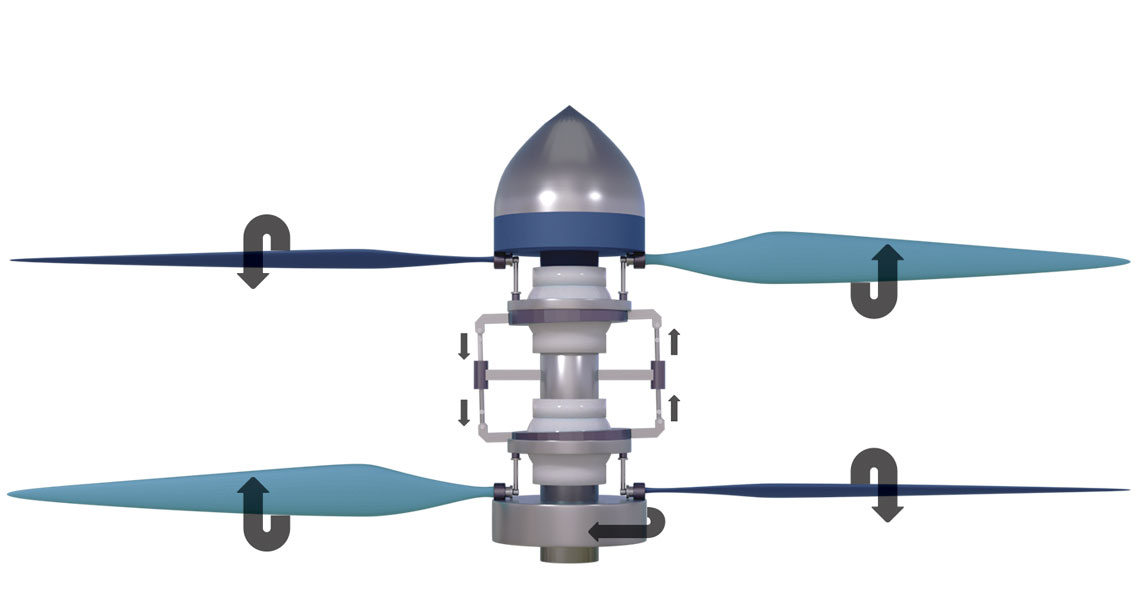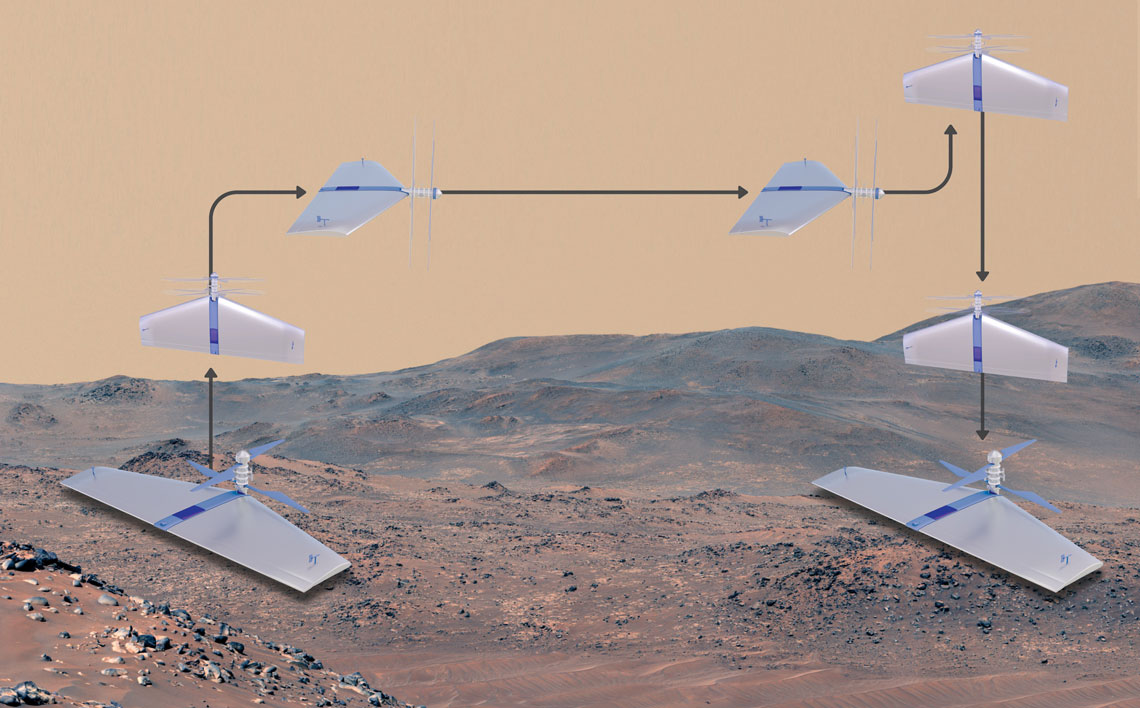A drone that generates hybrid solar and wind energy, capable of vertical takeoff, of hovering like a helicopter, and moving horizontally using wings like an airplane, would have the capacity for deployment on long-term missions with varying objectives in inhospitable areas of Earth or on other planets with atmosphere, such as Mars. The project to design an unmanned aerial vehicle (UAV)—the technical name for drones—with these characteristics was led by mechanical engineer Alysson Nascimento de Lucena with the support of researchers from the Federal University of Rio Grande do Norte (UFRN), his birth state, and the Aeronautics Institute of Technology, in São José dos Campos (São Paulo State). The patent for the device, dubbed Vant Marte by its inventors, was lodged with the National Institute of Industrial Property (INPI) in December 2023.
Lucena’s inspiration was born of issues faced by NASA’s solar-driven devices during Mars missions. In 2022 the drone Ingenuity, the first to overfly Martian soil, was grounded for days because its battery could not be recharged after a buildup of dust prevented the sun’s rays from reaching the photovoltaic panels on its structure. The same year, difficulties in capturing solar energy due to dust accumulation brought about termination of the geological research mission of the InSight probe, also on Mars.
“A UAV battery provides flight autonomy of between 20 and 30 minutes. Most of the time it is at rest, recharging the battery. On the Mars missions, this time in repose allows dust to build up on the solar panels, reducing recharge efficiency, and there are no humans around, nor any independent system to remove it,” explains Lucena.
The mechanical engineer’s proposed innovation, still in the design phase—there is no prototype as yet—is a UAV with wings, on which the solar panels will be installed. The system, comprising a single powerplant with two coaxial rotors—two overlapping propellers operating in synch—will provide thrust during the flight.
Each rotor will be equipped with a control system to enable the passage (or angle) of each propeller blade to be adjusted independently. When the drone is at rest a blade may be aligned at 90 degrees, perpendicular to the wind direction, while the other will remain neutral at 0 degrees (see image below). “An algorithm will calculate the wind direction and position the propeller to take maximum advantage for wind power generation,” details Lucena. During vertical flight the propeller movement will generate wind to assist in removing dust from the solar panels.

To better harness the wind for power generation, the angle of each blade can be adjusted independently, perpendicularly (light blue blades) or aligned to the wind (dark blue blades)Alexandre Affonso based on UFRN drawings
“Using the rotor blades to generate energy while the UAV is on the ground is an excellent, unprecedented idea,” says João Batista Dolvim Dantas, senior technologist at the Brazilian Aeronautical Command, and a specialist in robotics and remotely flown aircraft. “The hybrid wind and solar energy generation maximizes the mission duration of a UAV without requiring direct human manipulation. A drone with these characteristics will be able to collect data for long periods of time, and at long distances, in desert or polar regions, or in environments presenting a risk to human life, such as volcanic zones,” highlights Dantas.
The Mars UAV is dually hybrid because, in addition to wind and solar energy generation, it has a dual flight support system, with rotor blades and fixed wings. “This flight support combination raises the operational efficiency,” explains Raimundo Carlos Silvério Freire Júnior, Lucena’s master’s advisor at UFRN, who also took part in the development. An exclusively rotary-wing drone takes off and lands vertically, obviating the need for a runway, and can hover; however, the energy consumption to keep the rotors turning is high. An exclusively fixed-wing drone requires a runway, but has the benefit of flying horizontally, reducing fuel consumption and acheiving higher velocities. “The hybrid drone has the advantages of both systems,” says Freire Júnior.
Hybrid UAVs are nothing new: they are in early use outside Brazil, primarily on military and civil defense missions. “The combination of wing and rotor enables monitoring of an extensive area using the wing. If a specific point of interest is detected, the drone can then hover above it. During a special rescue mission, after locating the target the drone can approximate to view the situation in more detail, or deliver any necessary material,” exemplifies Neusa Maria Franco de Oliveira, Lucena’s postdoctoral advisor at ITA, where he coordinates a project involving a hybrid UAV with a traditional rechargeable battery.
The Mars UAV was conceived during Lucena’s doctorate in electrical and computer engineering at UFRN. According to computer systems engineer Luiz Marcos Garcia Gonçalves, who advised Lucena during his doctoral work, there are still significant challenges to be overcome to make the device functional for long-distance operations. Central among these is the development of algorithms for autonomous decision-making, such as determining the best use of the wind for power generation, or at what moment during flight the option should be taken to use rotors or wings.
The researchers are currently after funds estimated at US$2 million to develop a prototype of the device, with all its autonomous operations incorporated and designed to fly in an environment of low atmospheric pressure, such as that found on the red planet.
Lucena is currently a mechanical engineer at Equatorial Sistemas, an aerospace corporation in São José dos Campos (SP), and works in the sector responsible for drone innovations. One ongoing project is a hybrid flight model fueled by hydrogen. Large-scale, the drone is set to weigh 200 kilograms (kg) and will be used to transport cargos of approximately 50 kg, with flight autonomy of 450 km. The goal of Equatorial is to build a bigger apparatus, weighing 600 kg, capable of transporting 200-kg loads. “In the not-too-distant future, drones will be relevant in urban cargo logistics,” forecasts the engineer from the state of Rio Grande do Norte.
Republish